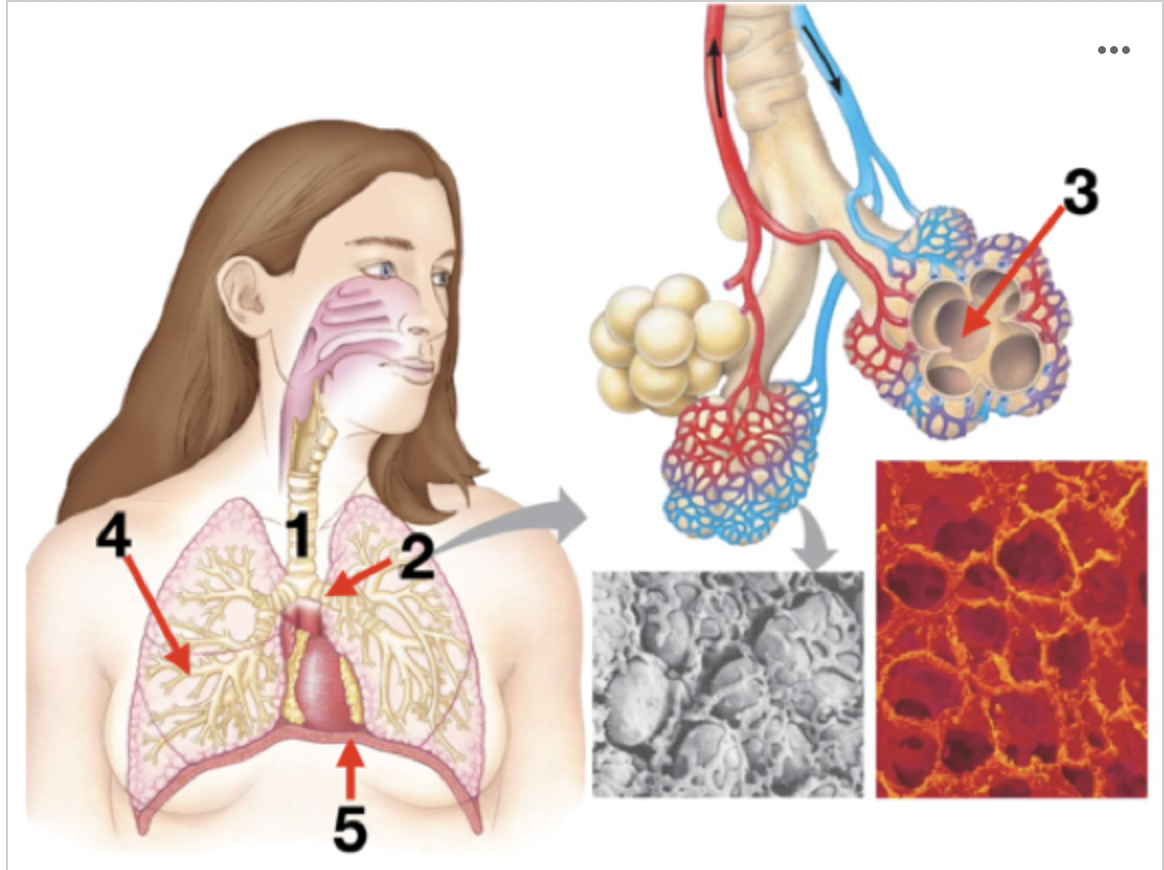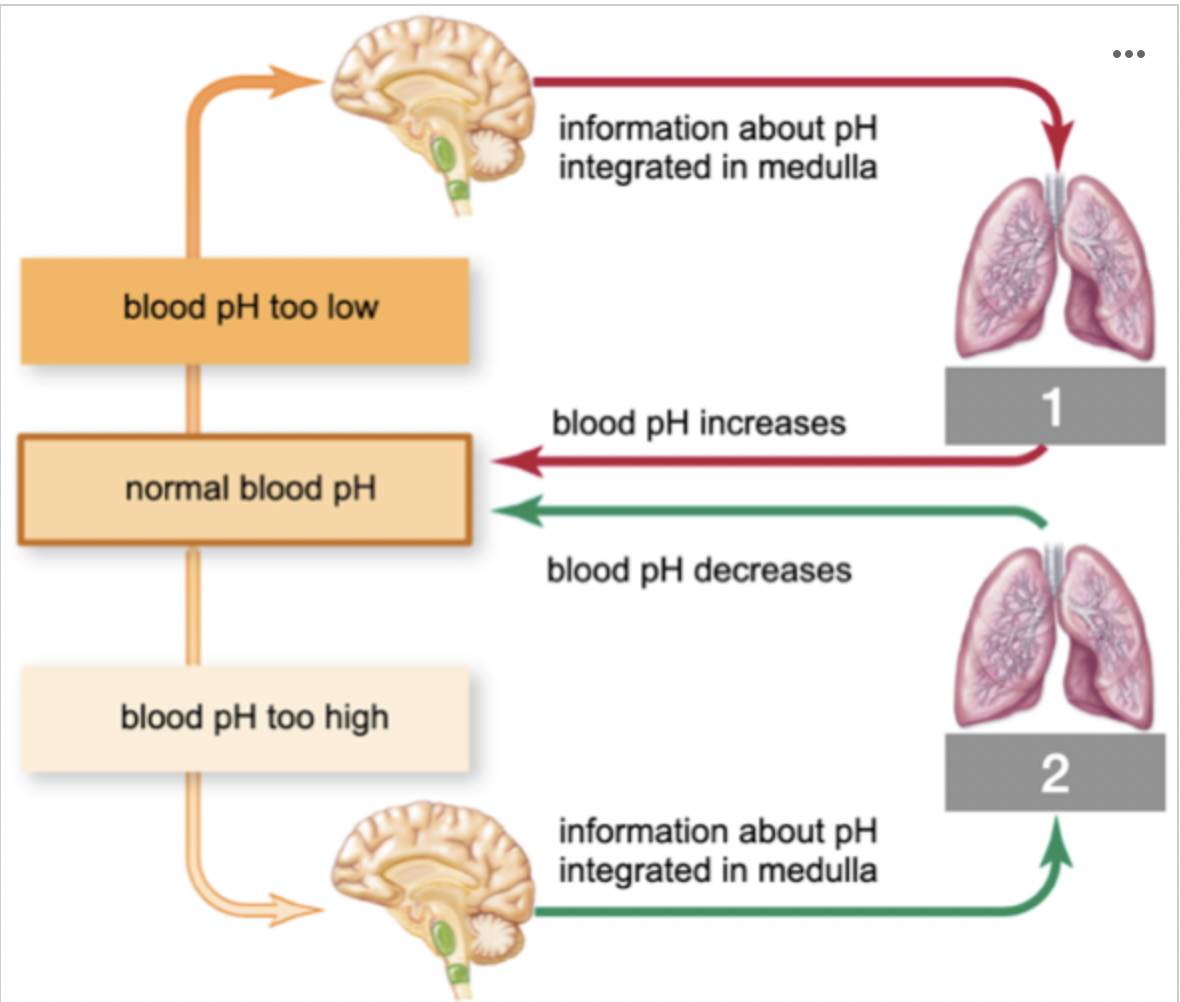Gas Exchange Homework
1/12
There's no tags or description
Looks like no tags are added yet.
Name | Mastery | Learn | Test | Matching | Spaced |
|---|
No study sessions yet.
13 Terms
Partial pressure refers to ___.
The pressure exerted by a particular gas in the air
Select all that apply: The partial pressure of a gas depends on the ____.
Total pressure of the mixture of the gases
The percentage/fraction of a particular gas in the mixture
Which direction will a gas diffuse?
from an area of high partial pressure to an area of low partial pressure
Gases have different partial pressures in different tissues, e.g. lungs, blood, and organs. Partial pressure of a gas can be calculated as % of gas in the tissue x atmospheric pressure. Which of area of the body has the highest partial pressure of CO2 (pCO2)?
To answer this question use the following information:
The atmospheric pressure is the same for all tissues (at sea level: 760 mm Hg)
The fraction of CO2 in the air in alveoli is around 0.05 (5%)
The fraction of CO2 in the blood in the tissues is around 0.07 (7%)
The fraction of CO2 in veins is 0.06 (6%)
organs (e.g. liver)
Select all that apply: Based on your answer to question above, CO2 will move ___.
from organs into veins
from veins into alveoli

The following is an image of respiratory system in the caterpillar of the silk moth. This respiratory system is network of infoldings of the body surface. This respiratory system is called ____.
trachael system
Select all that apply: Which respiratory surfaces use a closed circulatory system to enable gas exchange with tissues?
lungs
gills

The following diagram shows the human respiratory tract. Match the numbers with the correct descriptions.
trachae
bronchus/bronchi
alveolus/alveoli
bronchiole
diaphragm
Select all that apply: Which structures contract to generate negative pressure in human lungs?
diaphragm
interstitial rib muscles
During inhalation, the muscles you identified in the previous question _______, generating _______ pressure inside the lungs. This causes the lungs to expand.
contract, negative
During exhalation, the same muscles in the previous question _____, generating _______ pressure inside the lungs. This causes the lungs to contract.
relax, positive
Which gas regulates breathing under normal conditions by changing the blood's pH?
carbon dioxide

Under normal conditions, breathing rate is regulated by sensing the pH of blood, which depends on the concentration of the respiratory gas you identified in the previous question. Complete the following diagram by matching the number in the diagram with the correct response (The following diagram illustrates the negative feedback loop that controls breathing.)
1 - breathing rate increases
2 - breathing rate decreases